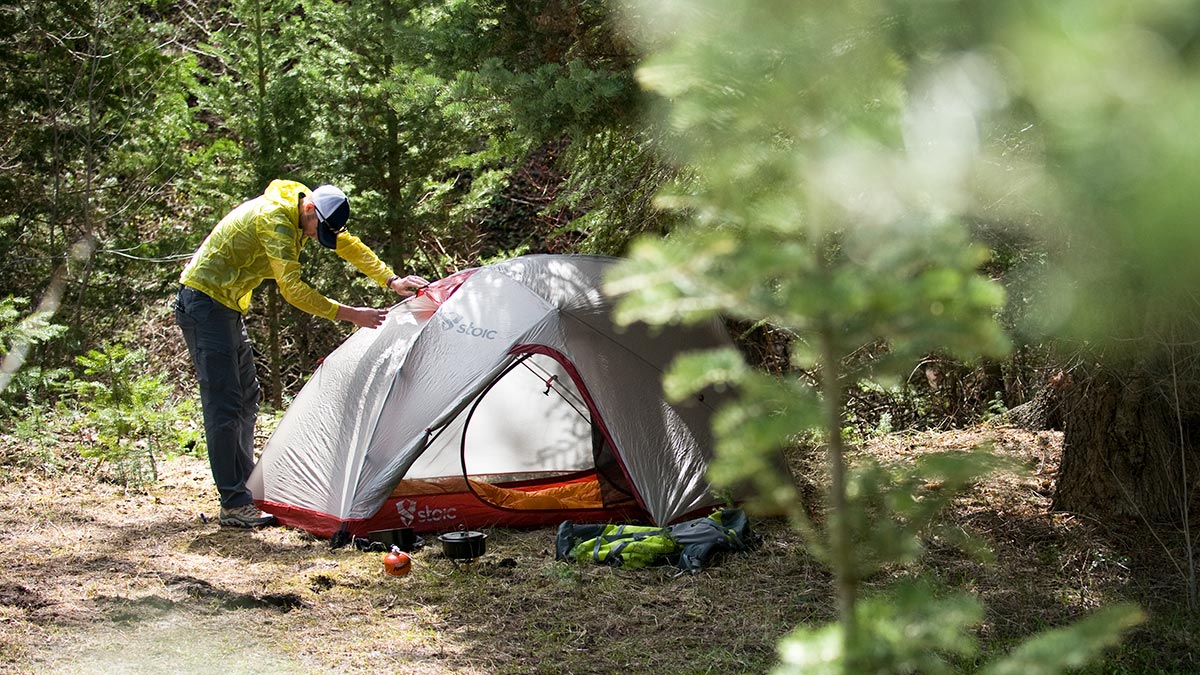 |
| BY TIM MACWELCH - Outdoor Life |
Fishing has been an extremely valuable food gathering strategy for thousands of years, and when we find ourselves in a survival setting, the fishing skills of our ancestors may be our only option. Consider these three traditional techniques in primitive fishing, and do your homework first to find out if they will work for your region.
1. Use Bare Hands
While the concept of hand fishing is simple enough, like so many other survival skills, the simpler processes require a lot of technique. Whether you are “graveling” for catfish or “bug diving” to collect lobsters, you're taking a page from the playbook of our most remote ancestors: catching aquatic animals with your bare hands.
Many catfish noodlers don't wear any protective gear when reaching around in underwater crevices and holes which could contain a fish. Since these freshwater fish species like to hang out in underwater rock ledges, in holes and under submerged logs, those confined spaces make them easier to catch. When you reach into these protected spots, the fish will be trapped with its back up against the “wall.” If it all goes right, the fish will advance and bite your hand. Fight your natural urge to pull your hand away. Leave your hand in the fish's mouth and pull the fish toward you. Wrap your free arm around the fish, being careful to avoid contact with the barbs on its fins.
Likewise, speedy grabs and swatting motions are the most successful methods of bagging a lobster from similar protected spots in shallow saltwater. Of course, these underwater shelters can also contain sea urchins, moray eels, scorpion fish, and other sea creatures that bite, stab, and sting. For safer lobster hunting, being truly bare handed is a poor choice. Instead, don a pair of Kevlar gloves. These cut-proof, puncture-proof gauntlets protect against urchin spines and many other dangers of the deep. And remember: never go hand fishing alone, go with others so that they can help you if you become injured or entangled.
2. Dope the Water
Although the act is illegal in most places today, our ancestors once used plant poisons to stun fish for easy collection. Numerous nuts, roots, seeds, fruits, and leaves contain compounds that have an effect on the respiratory or nervous systems of fish—especially in still water. The stupefied fish simply float to the surface, awaiting your collection. Crushed mullein seeds (Verbascum thapsus) have been used for centuries in North America as an effective fish poison. The crushed seeds release saponins, glycosides, coumarin and rotenone into the water, compounds that can stun fish and bring them to the surface. In addition to mullein, you can also use the bark and green nut husks of black walnut (Juglans nigra) in North America, and several native plants on each of the other continents. Used in a small body of water, it can bring up fish that refuse to be caught with other methods. Again, this is illegal and unsportsmanlike, but in a dire emergency—do what you must. Just catch and gut the fish quickly to minimize the meat's exposure to these toxins. Cook until well done.
3. Catch Your First Fish (On a Thorn)
There have been many occasions over the years when I couldn't have been more proud of my survival students. Some of the most memorable events have involved primitive fishing—really primitive fishing. Yes, it's amazing when you teach someone how to fish, and then watch their joyful reaction as they catch their first fish ever. When this happens, after you've taught them how to twist up their own cordage from plant fibers and make a thorn into a hook, and they caught their first fish on that primitive tackle, words can't express the feeling of accomplishment in both the teacher and the student. If you'd like to add this experience to your list of bushcraft accomplishments, then follow along.
Start by finding a sharp, straight thorn on a tree or bush. This can be used as a gorge hook, which will catch a fish by their innards, rather than by their mouth as steel hooks operate. Collect the strongest plant fibers you can find. This may be dogbane or you can strip off fibrous inner bark from trees like the mulberry. Twist together a thin but strong thread, using the reverse wrap method. Twist the cord and splice in new fibers until you have several meters of fishing leader. You can tie this to stouter cord for hand line fishing, or tie it to a long pole for pole fishing. Tightly tie the dull end of your thorn to the end of the line, thread a chunk of bait onto the thorn, and cast into the water. The technique here is to allow the fish to swallow the bait. Do not jerk the line to set the hook. After you think the fish has swallowed the bait, slowly coax the fish into a waiting dip net.
Be sure to visit Outdoor Life at: www.outdoorlife.com
For additional Prepper information, see our:
Blog Table of Contents
Survival Fishing



















